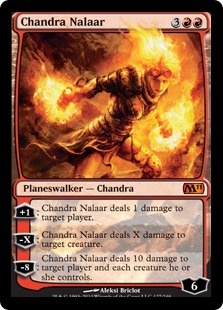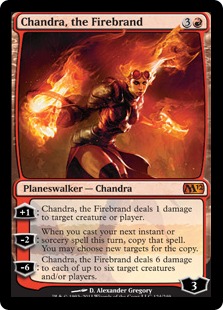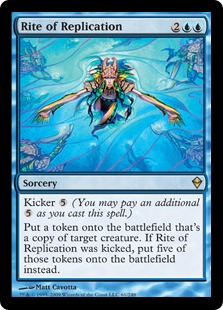The concept of Kaizen, defined as continuous improvement, is something that hasn’t frequently been referenced in Magic discussion, but it’s a concept that’s employed frequently in Magic, whether we’re familiar with it or not. It manifested in Japanese manufacturing companies when Japan was recovering from World War II. It became very popular in Japanese automobile manufacturers such as Toyota, helping the company experience very quick growth in the 1980s and spreading to the United States through movements like lean manufacturing and Six Sigma.
So what does this have to do with cube? The concept of Kaizen is monumentally important for cube designers and not necessarily in the ways that people may think.
Kaizen
Kaizen’s maxim of continuous improvement isn’t about simply keeping up with new sets or kicking out old cards to replace them with newer, better ones. Instead, the concept of Kaizen refers to how to look at each component in a cube and to look at what each card contributes to your cube’s sections (each of the WUBRG colors mainly, but also the multicolor, artifact, and land sections), looking for ways to continually improve them. Kaizen doesn’t merely say that there should be no “bad cards” in a cube (since they shouldn’t be there anyway, but it’s unfortunately quite common) but to instead realize that there can still be improvement in a cube, even when there are no “bad cards” there.
Many people consider making changes to their cube only when new cards come out, since that’s when new cards come out to replace old ones, but changing the contents of your cube shouldn’t just be considered in the context of new sets. It’s a convenient time to take cards out of a cube when new cards come out, since it allows designers to jettison some of the cards that have been performing poorly from their cubes.
“Vengeful Pharaoh just didn’t provide much of an impact on board states. Thankfully, there are some nice black cards coming in Innistrad, so there are plenty of options to replace it with, so I’ll take it out.”
However, when it comes to replacing cards in cube, new cards shouldn’t be the only ones considered for contention, and monitoring the power of cubes shouldn’t just be considered in the context of replacements, as this implies that everything in that section is running optimally, when it may not necessarily be true.
When Kaizen is used as part of analysis in a business process, it looks at every step in the process and carefully analyzes the steps to see if there is any way that a step could be improved.
Kaizen within corporations worked by making logisticians and industrial engineers critically look at each step of a process, checking the efficiency of those steps to see if any of the steps were being done inefficiently or were negatively affecting the overall process. All of the steps are being done and the process is being completed, but that doesn’t necessarily mean that each step is necessarily efficient, or that there aren’t improvements that could be made to streamline the process. It just means that the process is being done. Whether changes resulted in saving a few seconds of employee time by moving a copy machine a few feet down the hallway to a department where more copies were being made, or changing a conveyor belt’s path to a more efficient one, the process of kaizen is used to gain efficiencies in each of these steps.
When looking at cards in a cube in this way, it means to look at every single card in a section and seeing if the section could be improved by replacing cards.
Someone can look at a section in their cube and think “Nothing in here is bad, so I don’t need to change anything,” because as I said earlier, just because nothing is necessarily bad in a cube, that doesn’t mean that it can’t be improved.
This isn’t merely referring to making easy changes and upgrades—almost no one is going to run Shock when they’re not running Burst Lightning or even Seal of Fire and Firebolt. Easy changes are easy, and they’re generally the most obvious changes to make. When new cards come out, people fall into the trap of making easy changes because, well, they’re easy.
When Chandra, the Firebrand came out in M12, some people thought of taking Chandra Nalaar out of their cubes for the sleeker 3R version, but unless you’re purposely restricting the number of planeswalkers in your cube for supposed power reasons (which isn’t really a good reason, something that I’ll cover in a future article), making the easy change of Chandra Nalaar to Chandra, the Firebrand isn’t a correct one since there’s easily room for both planeswalkers in most cubes.
Making “easy upgrades” for cards of similar function does make sense for some cards—mainly those with a limited number of slots in a cube, like finishers and mass removal—as both aren’t needed in large amounts to support control decks; having a red section with a disproportionally high amount of finishers and mass removal makes the red control decks extremely happy but leaves the red aggressive decks woefully underrepresented.
When Grave Titan was printed, people who were still using weaker finishers like Visara the Dreadful and Skeletal Vampire were able to replace one of those finishers with Grave Titan rather easily. Grave Titan just performed the task of a big finisher in black much better than the other two cards. Since there shouldn’t be a ton of big finishers, making that upgrade makes sense, whereas changing something universally playable like Chandra Nalaar into Chandra, the Firebrand doesn’t necessarily work in the same manner due to the non-limit on universally playable cards. That and Chandra Nalaar is still a very good cube card, and better cuts can be found by putting more effort into finding cards to cut.
Of course, examining card inefficiencies and finding replacements don’t necessarily need to be at the same/similar mana cost, as Kaizen stresses overall improvement of a section. Keeping the strength of archetypes and the strengths and weaknesses of your sections is absolutely key for a strong cube, and doing so can be done through some non-linear changes.
For example, when Sun Titan was printed, I was only using Yosei, the Morning Star, Akroma, Angel of Wrath, Exalted Angel (although it was usually considered a 2WW card due to its morph), and Eternal Dragon as my white 6+ mana creatures. However, since my white mana curve was already quite low, I was able to replace one of the mediocre creatures from the 2-4 mana range for Sun Titan.
When adopting the Kaizen point of view, I made some changes that I’d have never thought of doing. I cut Karmic Guide because of the high amount of five-drop competition for some more aggressive support and added in Flickerwisp—a card that I once cut—because of powerful new interactions, despite cutting a quality card like Scepter of Dominance.
I also added more ramp targets in my common cube, so that drafters would have more incentives than the big blue fliers of the format (Errant Ephemeron, Illusionary Forces) to play with control, despite cutting some strong cards at lower costs.
These were all changes done not because of a card stinking up my cube, but because the changes would provide overall benefits to my cube, which they have.
It’s yet another reason why an on-deck binder is useful for cube designers—cards that are cut from a cube are never truly gone forever and can come back (like Flickerwisp), especially if done as a way to try to improve a weakness in a section.
Being “ROTTY”
The podcast Limited Resources has frequently talked about the pitfalls of focusing too much on wins gained with a card as opposed to a card’s overall performance, also known as overly results-oriented thinking, or being “ROTTY,” when evaluating cards in Limited. While being aware of thinking in ROTTY ways is definitely important for players of both Limited and Constructed, it’s even more important for cube designers to be wary of being ROTTY and to understand how falling victim to it can be a big hindrance for one’s cube.
An example that has been used on Limited Resources and something that you’ve probably seen at a store when drafting is someone being ROTTY when evaluating suboptimal cards like Fog and Nourish because the fans of those cards can point to specific examples when those cards won them games, such as allowing them to race an opponent to victory.
They’ll say, “Fog/Nourish is a great card; an opponent alpha-striked me, and I blew him out with Fog/Nourish and alpha-striked back for the win,” while forgetting the times that it got stuck in their hand doing little for its card slot in the deck. Instead they focus on the times when it won them the game. You’ve probably been the person who told the Fog player that it wasn’t very good and found that the Fog player got defensive, citing how Fog/Nourish helped them in a racing situation and therefore is a good card.
While no one’s going to use cards that are as bad as Fog and Nourish in their cube, people still use suboptimal cards and defend them using scenarios where the card did what the card promised to do. Every card is put into a cube because it, at the very least, holds the promise of doing something particularly well (as it should be; a cube is supposed to have the best cards ever). But not all of these cards live up to those initial promises, and their overall effect may be, in actuality, quite weak. It can be easy to get caught up in those initial promises, vividly remembering those instances when the card delivered what it promised.
People all around the world spend countless hours playing paper Magic and MTGO, grinding many iterations of decks to objectively answer the eternal question of “How good is this card?” Even if someone is able to cube several times a week, a playgroup won’t have access to the collective power of Magic pros and the MTGO collective, grinding out infinite hours to find out what is better (and even still, that question has a lot of facets—namely about the metagame, the power of the colors, and decks in the format, etc.) However, even if a playgroup doesn’t have that power, a playgroup and a cube designer can use similar ideas to improve a cube through Kaizen.
For example, someone could defend a card like Rite of Replication by saying how it was able to clone a creature like Mulldrifter or Murderous Redcap five times to kill an opponent out of nowhere and then follow it up by saying how it’s still an okay card when it isn’t kicked. However, this ignores the overall effect of the card—how often is Rite of Replication really kicked and how often is it unkicked? How does it compare to other clone effects like Clone, Phyrexian Metamorph, Phantasmal Image, and Vesuvan Shapeshifter, and other four-mana spells in your cube? How is Rite of Replication contributing to blue’s win % in your cube?
I’ve touched upon the topic of using usage statistics to track how cards are being used and whether cards are making the maindeck or if they’re sitting in the sideboard. People can track the win % of decks, archetypes, and individual cards, but I don’t think going that far is necessary. It takes a while to track the information, but a more subjective measure, such as noting what cards are typically in the maindeck and whether those cards are in winning decks, is a good measure of success.
These are tough questions to answer, as it’s very easy to remember the blowout scenarios of a card versus its average ones; trying to remember the approximate percentage of how often a card like Rite of Replication gets kicked or how often a card like Forked Bolt gets split can be difficult (but then again, it’s not necessary to think in terms of absolute percentages, but more approximations like ‘about 1/3 of the time’). It’s also very hard to compare very dissimilar cards to each other when considering cards to improve—how does Bloodgift Demon compare to Makeshift Mannequin, Dismember, and Sorin Markov in terms of overall power level? If critical card evaluation was easy, we wouldn’t have cards like Mimic Vat, Tarmogoyf, and Consecrated Sphinx sneak up and surprise people, set after set! Regardless, these are the types of questions that you should be asking yourself for all of the cards in your cube.
I hope that this article has given you has given you some insight on looking at cards for your cube. It’s tempting to rely on anecdotal evidence for a card’s strength in a cube, but it isn’t getting the entire picture when looking at the overall power level of a card for a cube, as it isn’t thinking holistically.
May all of your opening packs contain Sol Rings!
@UsmanTheRad on Twitter
My blog, I’d Rather Be Cubing, featuring my powered & pauper cube lists: http://idratherbecubing.wordpress.com
Cube podcast that Anthony Avitollo and I co-host: The Third Power





